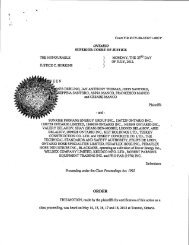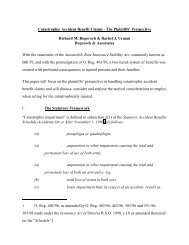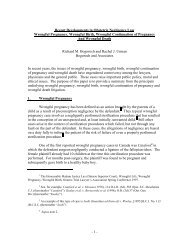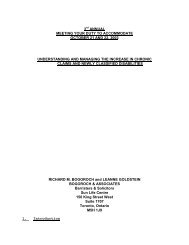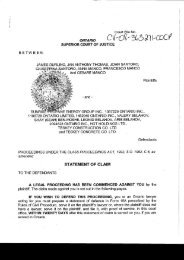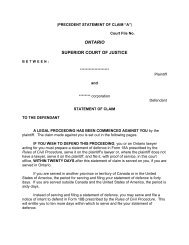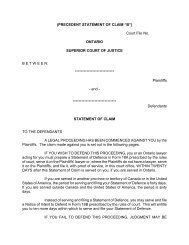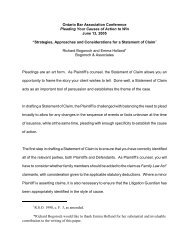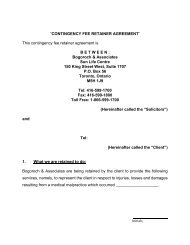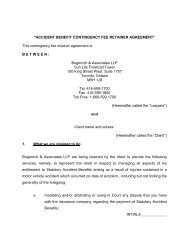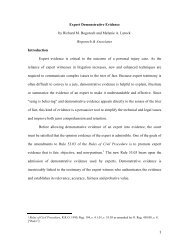"Thin Skull" Damages into "Crumbling Skull" Damages - Bogoroch ...
"Thin Skull" Damages into "Crumbling Skull" Damages - Bogoroch ...
"Thin Skull" Damages into "Crumbling Skull" Damages - Bogoroch ...
You also want an ePaper? Increase the reach of your titles
YUMPU automatically turns print PDFs into web optimized ePapers that Google loves.
-14-<br />
contributed to his injury, in a case where there may be tortious and non-tortious contributing<br />
factors 13 :<br />
2. if the plaintiff’s injury would likely have occurred at the same time without the<br />
injuries sustained as a result of the tortious act, causation is not proven;<br />
3. if both the tortious and non-tortious acts were necessary to the injury, causation is<br />
proven, since the injury would not have occurred but for the tortious act. Even if the<br />
tortious act played a minor role, the defendant would be fully liable because the<br />
tortious act was still a necessary contributing cause; and<br />
4. if the tortious act alone could have been a sufficient cause, and similarly, the nontortious<br />
act could have been a sufficient cause of the injury, the trial judge must<br />
determine, on a balance of probabilities, whether the tortious act materially<br />
contributed to the injury.<br />
Athey has been cited in a number of Ontario decisions since 1996. Ontario courts have generally<br />
not engaged in an in-depth analysis of the decision itself but have, with a few exceptions discussed<br />
below, consistently applied the principles enunciated by the Supreme Court of Canada regarding<br />
multiple contributing factors to accidents, both tortious and non-tortious.<br />
13 Ibid. at 10.



